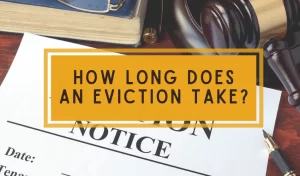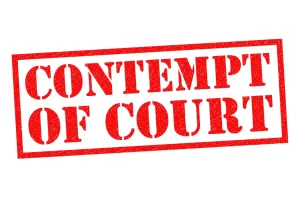How to Get Full Child Custody Without Going to Court
Can You Get Full Child Custody Without Going to Court?
A parent can get full custody of a child without going to court through mediation. In child custody mediation, custody and visitation agreements can be agreed upon and drafted outside of court, then submitted to a judge for approval.
Child custody is a parent’s legal right to see or make decisions for their child. California courts ultimately uphold the child’s best interests. A judge can either decide what custody order would determine the child’s best interests in court, or approve a custody agreement reached and drafted by the child’s parents in mediation.
However, child custody can only be determined outside of court if the responding spouse did not contest the divorce petition. If the respondent contested the divorce, you’ll need to go to court to settle custody terms.
Go to Mediation to Seek Full Child Custody Without Going to Court
Mediation is a great way for parents to settle child custody terms without going to court. In mediation, parents work with a neutral, third-party mediator that helps reach a mutually satisfactory custody agreement. The mediator can help the parents make a parenting plan, which includes each parent’s schedules and responsibilities in taking care of the child.
In mediation, both parents will negotiate custody terms until an agreement is reached. Then, a custody and visitation agreement is drafted and submitted to the court for a judge to sign. Agreements reached in mediation are not legally binding or enforceable until signed by a judge.
If you’re looking to get full custody of your child without going to court, it may be in your best interest to set up mediation. Contact Her Lawyer to get in touch with one of our experienced divorce and child custody mediators.
Bring an Attorney
To get full custody of a child without going to court, bring an attorney to mediation, or have them advise you outside of court. Some parents hire an attorney to represent them in the actual mediation session, while others prefer to be advised outside of mediation and be in the session with just the mediator and their child’s parent. You can ask your attorney what to expect in child custody mediation.
California’s child custody laws are complex, and an experienced child custody attorney can help you protect your rights and win custody outside of court. If you want to get in touch with an experienced attorney in your local area, contact Her Lawyer to get in touch with one of our skilled child custody lawyers.
Set Sensible Goals
A parent in mediation can get full custody of their child without going to court by first setting sensible goals. Think about the exact custody terms you want, then make a list of your nonnegotiables and trivial preferences. If push comes to shove, let your child’s parent win less-important differences while you take home the nonnegotiables.
Gather and Prepare Evidence
Then, gather and prepare evidence to support your goals. Any claim you make in mediation should be backed by proof; this will strengthen your case and likelihood of getting full custody of your child without going to court. Collect, review, and organize any documents relevant to your custody case. If, for example, you’re claiming that you’ve picked up your child from school on time every day, get a written statement from a teacher that confirms your responsibility. You ultimately want to prove that you’re fit to parent, so bring any and all evidence that demonstrates so. The mediator will guide the discussion in a way that they believe protects the child’s best interests and balances parental rights.
Draft and Submit a Custody Agreement
Once you’ve reached an agreement that gives you primary, sole, or full custody of your child, the mediator or an attorney can draft a final custody agreement. This agreement will clearly state the terms agreed upon in mediation. Once drafted and reviewed, the custody agreement will be sent to a judge for approval. The custody agreement is not legally enforceable or binding until signed by a judge.
Having custody of a child means you have legal rights and legal responsibilities. There are different kinds of custody. Physical custody means a child spends time with you. Legal custody means you have decision-making authority over the child.
This guide explains how to get custody of a child so you can better understand how to use the legal system to protect your rights.
How to Get Custody of a Child: A Step-by-Step Guide
Determining how to get custody of a child can be difficult because the process depends on your relationship to the child as well as your state laws. For example, if you are a grandparent pursuing custody of a grandchild, the steps will be different than if you are a father seeking custody. There are several common steps you may need to take:
Establish Parentage, If Necessary
When a child is born to a married couple, the law assumes both spouses are the parents of the child. But, this is not necessarily the case in other situations. If you are the father of a baby born out of wedlock and you have not been named on the birth certificate, you may need to establish you are actually the child’s father before trying to get custody.
If you need to establish parentage, this can be done by filing a petition with the court. The court can then move forward with ordering a DNA test to determine if you have a legal right to the child.
This is not necessary if you are the mother or adoptive parent of a child.
If you are petitioning for custody of a child that you are not the biological parent of, this step is not necessary but there are different processes that must happen before you pursue custody.
For example, if grandparents ask the court to award them custody because the child’s parents are unfit, the grandparent would obviously not need to show they are the legal parents. Instead, the court would need to determine the actual parents are unfit. After that, the court would need to determine it is in the child’s best interests to give custody to the grandparents.
Determine If You Can Resolve the Issue of Custody Outside of Court
In an ideal situation, you can reach a child custody agreement without going to court.
If you and the child’s other parent can agree on how custody will be divided, you can make a parenting plan that will become your legal custody agreement. This will allow you to avoid litigation.
You may wish to work with an experienced mediator to try to come to a resolution. Mediation helps you find workable solutions and communicate effectively to maximize the chances of compromise.
Creating a custody agreement on your own or with the help of a mediator can save you money compared with litigation, and it can save both time and stress. It can also result in better outcomes. You can work together to decide how to co-parent in the best way for the child, rather than becoming involved in an adversarial proceeding.
If you are a relative like an aunt or grandparent seeking custody of a child for whom a parent is unable to care, you can usually get custody of a child if the parent(s) agree to sign over their rights.
Determine If You Have Grounds to Seek Custody
If you are the child’s parent, you have a legal right to at least shared custody of your child. However, you typically are entitled to sole custody only if there is a reason the other parent is unfit. This could include issues such as abuse or neglect.
If you are not a parent to the child, you will not be able to obtain custody unless the parent(s) consent or the parent(s) are declared unfit and the court determines it is in the child’s best interests for you to be given custody. You could potentially pursue custody in these situations if the parents have engaged in abusive or neglectful behavior or have abandoned the children.
File Court Papers in the Home State Where the Child Lives
If you have grounds to do so, you can file for custody of a child by submitting the required court paperwork. You need to file for custody in the child’s home state. That’s because the home state has jurisdiction over the child and the authority to make custody decisions.
The child’s home state is the place where the child has lived with a parent or guardian for at least six months prior to the time you are filing for custody. If the child is not yet six months old, you could file for custody in the place where the child has lived from birth.
There are limited exceptions to the home state rule. If there is no location that is clearly the child’s home state, then you have to file suit in a court where you have significant connections such as the child currently attending school in that state or the state having been the child’s home state for a significant time. You need to provide proof that there are enough connections to the area that the court should have the authority to rule on custody issues.
Serve the Parent(s) With Papers
The child’s other parent (or both parents) must be served with court paperwork informing them that a custody case has been initiated.
An adult who is not involved in the case may need to serve the parent(s) in person, although service by mail or publication may be allowed under certain circumstances. Usually, a process server or the local sheriff will serve court papers for a fee.
Make an Argument for Your Preferred Custody Arrangement
Once a custody case has been filed, the court holds a hearing.
In the hearing, you have to convince the court that your preferred custody arrangement is in the best interests of the child.
You can argue for both legal custody and sole or partial physical custody depending on your preferences. Legal custody gives you authority to make decisions on the child’s behalf. Physical custody refers to the child spending time with you. There are different arrangements for physical custody including:
- Sole custody: The child lives with you all of the time
- Primary custody: The child lives with you most of the time with scheduled visits with the other parent
- Joint custody: The child shares time with you and the other parent
You need to present evidence supporting your positions to convince the court that your preferences are in the child’s best interests. That’s because the best interests of the child standard is what the court uses to decide what custody arrangement is appropriate.
Many states consider multiple factors in determining the best interests of the child. Typical examples include:
- The relationship between the child and their parents, siblings, family and household members
- The parent’s capacity to provide a safe home and adequate food, clothing and shelter
- The mental and physical health needs of the child
An experienced family law attorney can help you make a compelling case when you are exploring how to get custody of a child.







